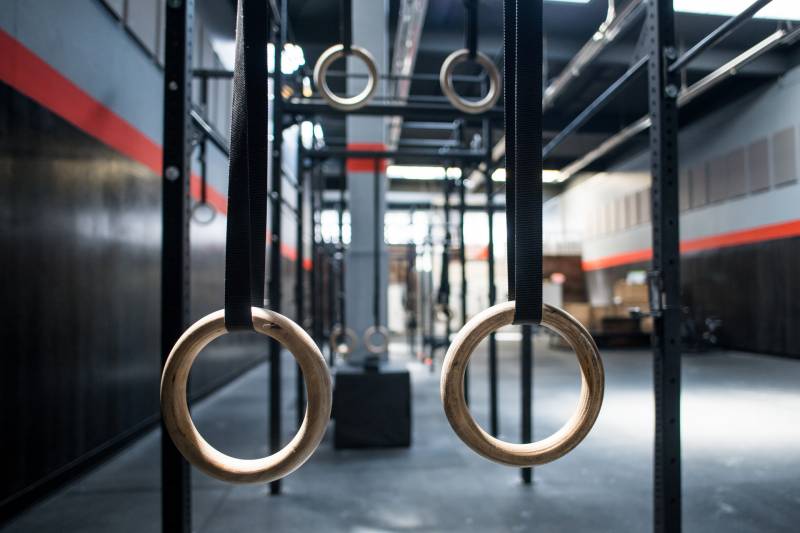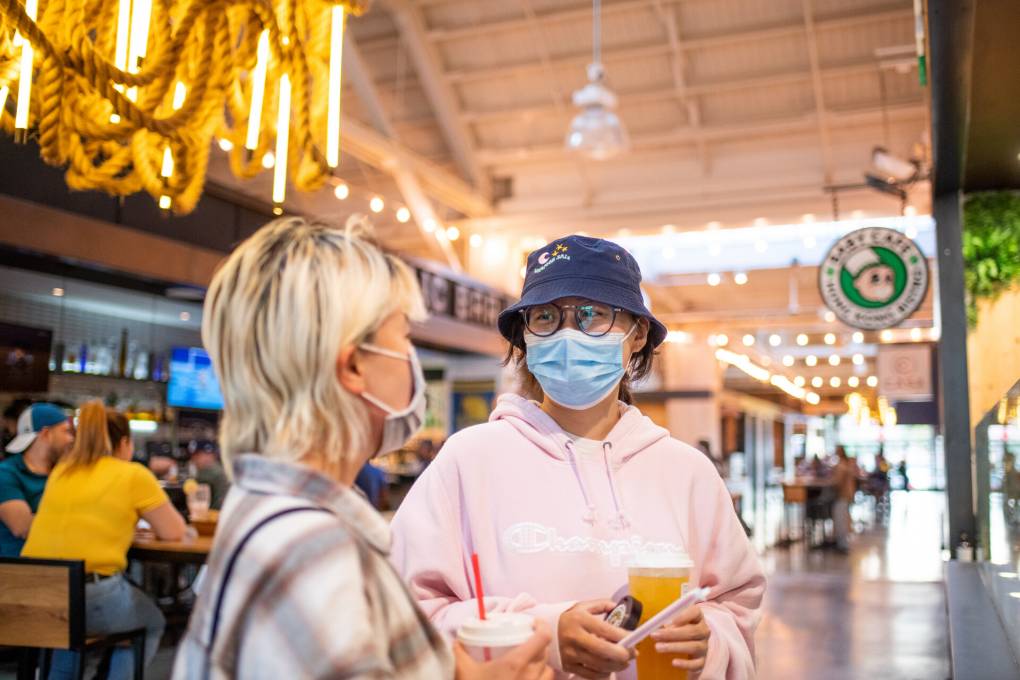What's different now in San Francisco and Marin?
Starting Oct. 15, San Francisco will ease indoor masking requirements under certain conditions in the following settings:
- Offices
- Gyms and fitness centers
- Employee commuter vehicles
- Religious gatherings
- Indoor classes, lectures or similar gatherings that meet regularly with fewer than 100 people
The San Francisco Department of Public Health has also released explicit workplace masking guidance for employers.
Hosts, employers and business owners in San Francisco wishing to lift masking requirements in their establishments must verify that everyone in that space is fully vaccinated (meaning two weeks have gone by since they got a second dose of the Pfizer or Moderna shot, or a first dose of the Johnson & Johnson) and follow specific COVID-19 safety protocols, like providing proper ventilation, making sure no recent outbreaks have occurred, and checking that everyone age 12 and over is vaccinated and that there are no medical or religious exemptions.
Similarly, Marin County on Friday also is easing indoor masking rules in the following settings where there are not more than 100 people:
- Indoor offices
- Gyms and fitness centers
- Employee commuter vehicles
- Religious gatherings
- Indoor classes, lectures or similar gatherings that meet regularly
Marin County is also requiring all hosts, employers or organizers wishing to lift masking rules in their establishments to maintain a list of all individuals present and verify that everyone is fully vaccinated and that the setting is not open to the general public.
Both San Francisco and Marin are still requiring indoor masking at bars and restaurants (when patrons are not actively eating or drinking), retail stores and in common areas of public buildings, including bathrooms, elevators and lobbies.
Indoor masking rules have not changed in Alameda, Contra Costa, Napa, San Mateo, Santa Clara and Sonoma counties, which means masks there are still required in all public spaces.
And in keeping with state public health guidelines, masks are also still required throughout California on all forms of public transit (ferries, buses, taxis, rideshares and planes) and in transportation hubs, as well in health care settings, shelters and cooling centers, and state and local correctional facilities. They are also still mandated in all K-12 schools, day camps, child care centers and other indoor areas where groups of youth are present.
What happens next?
Earlier this month, health officers in Alameda, Contra Costa, Marin, Napa, San Francisco, San Mateo, Santa Clara and Sonoma counties said they would lift masking requirements in select indoor public settings when the following three benchmarks have been reached in their respective regions:
- The jurisdiction has moved into the yellow or "moderate" COVID-19 transmission tier — as established by the Centers for Disease Control and Prevention (CDC) — and remained there for at least three straight weeks.
- COVID-19 hospitalizations are "low and stable," as determined by local health officials.
- Eighty percent of each jurisdiction's total population is fully vaccinated, or eight weeks have passed since the federal emergency authorization of the COVID-19 vaccine for children age 5 to 11.
These guidelines do not pertain to Solano County, which is the only Bay Area county that did not issue a mask mandate in early August when the delta variant led to a surge in new coronavirus cases.
Check your county's current rules for masks and facial coverings
Check current local masking guidance — as well as COVID relief and other community resources — on your county's public health website.
If you work in a different county from the one you live in, be sure to check the rules in both counties to see how your workplace might be affected.
Alameda County COVID-19 mask guidance
City of Berkeley COVID-19 mask guidance
Contra Costa County COVID-19 mask guidance and FAQ
Marin County COVID-19 mask guidance and FAQ
Napa County COVID-19 mask guidance and FAQ
San Francisco County COVID-19 mask guidance and FAQ
San Mateo County COVID-19 mask guidance and FAQ
Santa Clara County COVID-19 mask guidance and FAQ
Solano County COVID-19 mask guidance and FAQ
Sonoma County COVID-19 mask guidance and FAQ


